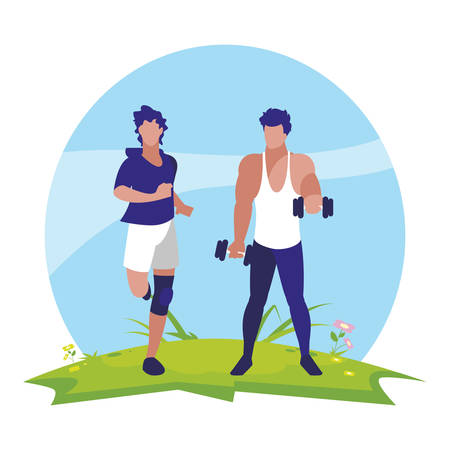Introduction to Pediatric Sports Injuries
Sports and physical activities play a vital role in the healthy growth of children and teenagers across the United States. However, with increased participation in sports, there is also a higher risk of injuries among young athletes. Understanding the types of injuries that commonly affect this population, the current trends, and their impact on youth sports involvement is essential for parents, coaches, and healthcare professionals.
Common Sports-Related Injuries in Children and Adolescents
Pediatric athletes can experience a range of injuries, from mild sprains to more serious fractures. These injuries often result from repetitive use, accidents during play, or inadequate warm-up routines. Below is an overview of some of the most frequent sports-related injuries in kids and teens:
| Type of Injury | Description | Common Sports |
|---|---|---|
| Sprains and Strains | Injury to ligaments (sprains) or muscles/tendons (strains) | Soccer, Basketball, Football |
| Fractures | Broken bones caused by falls or direct blows | Biking, Skateboarding, Football |
| Growth Plate Injuries | Affects the area of growing tissue near ends of long bones | Baseball, Gymnastics, Soccer |
| Overuse Injuries | Damage from repetitive stress without adequate rest | Running, Swimming, Tennis |
| Concussions | Mild traumatic brain injury from impact to the head | Football, Hockey, Soccer |
| Knee Injuries (like ACL tears) | Tears or strains involving knee ligaments or cartilage | Soccer, Basketball, Football |
Trends in Pediatric Sports Injuries in the United States
The number of children participating in organized sports has risen over the past few decades. According to recent studies, millions of kids are treated annually for sports-related injuries in emergency rooms across the U.S. Overuse injuries have become increasingly common as more young athletes specialize in one sport year-round. Girls are also seeing higher rates of certain injuries like ACL tears due to differences in anatomy and training styles.
Youth Sports Participation and Injury Impact
Suffering a sports injury can be a setback for any child. Some may need to take time away from their favorite activities to recover fully. In some cases, repeated or severe injuries can lead to kids dropping out of sports altogether. This not only affects their physical health but also impacts social skills and confidence gained through team participation.
Key Takeaways for Parents and Coaches
- Most pediatric sports injuries are preventable with proper training and attention to safety.
- Recognizing early signs of overuse or acute injuries helps reduce long-term effects.
- Caring adults can encourage safe play while promoting a lifelong love for healthy activities.
2. Risk Factors and Injury Prevention
Unique Risk Factors for Sports Injuries in Children and Teens
The risk factors for sports injuries among kids and teens are different from those seen in adults. Childrens bodies are still growing, which makes their bones, muscles, and tendons more vulnerable to injury. Growth plates—areas of developing tissue at the ends of long bones—are especially sensitive. In addition, young athletes may lack the strength, coordination, or experience needed to avoid certain injuries.
| Risk Factor | Description | Example in American Sports |
|---|---|---|
| Growth Spurts | Rapid changes in height and muscle length can cause imbalances or decreased flexibility. | Knee pain during basketball season due to Osgood-Schlatter disease |
| Overuse | Repeating the same motion without enough rest leads to stress injuries. | Pitcher’s elbow from throwing too many baseball pitches |
| Poor Technique | Lack of proper training increases risk of injury during play. | Improper tackling in youth football causing shoulder injuries |
| Inadequate Equipment | Using gear that doesn’t fit or isn’t sport-appropriate raises injury risk. | Wearing worn-out cleats during soccer games |
| Early Specialization | Focusing on one sport year-round increases overuse injuries and burnout. | A child playing only club volleyball all year with no other activities |
Evidence-Based Prevention Strategies
Preventing sports injuries requires a team effort involving athletes, parents, coaches, and healthcare providers. Using research-based strategies can make a big difference:
- Proper Warm-Up and Cool-Down: Encourage dynamic stretching before practice or games and static stretching after activity.
- Age-Appropriate Training: Exercises should be matched to the child’s age and stage of development—not just their skill level.
- Rest Days: Make sure young athletes have at least one or two days off from organized sports each week to allow their bodies time to recover.
- Diversification: Playing multiple sports throughout the year reduces overuse injuries and promotes all-around athletic development.
- Protective Gear: Helmets, pads, mouthguards, and properly fitted shoes help protect against common injuries in sports like football, hockey, baseball, and basketball.
- Education: Teach athletes how to recognize early signs of injury and encourage them to speak up if they feel pain or discomfort.
The Importance of Education for Athletes, Parents, and Coaches
A key part of injury prevention is making sure everyone involved understands the risks. Kids sometimes try to “tough it out,” not realizing an untreated injury can get worse. Coaches may push players too hard without recognizing warning signs. Parents may not know when a child needs rest versus when they should see a healthcare provider. In the United States, many organizations like Little League Baseball, Pop Warner Football, and local youth soccer leagues offer resources on injury prevention and safe sports practices. Open communication between athletes, parents, coaches, trainers, and doctors helps create a safer environment for everyone involved.
Quick Tips for Families and Coaches:
- Create an open-door policy so kids feel comfortable reporting pain or concerns.
- Stay informed about your child’s training schedule and encourage breaks when needed.
- Attend education sessions offered by leagues or schools about sports safety.
- If something doesn’t seem right—when in doubt, check it out with a professional!
This proactive approach keeps young athletes healthier—and lets them enjoy their favorite American sports for years to come.

3. Assessment and Diagnosis
Understanding the Unique Needs of Pediatric Athletes
When it comes to sports injury rehabilitation in children and teens, assessment and diagnosis require a specialized approach. Kids and adolescents are not just “small adults”—their bones, muscles, and joints are still growing, which impacts both how injuries happen and how they heal. Healthcare providers in the United States pay special attention to growth-plate (also known as physis) injuries because these areas are weaker than surrounding bone and are more prone to damage during childhood.
Growth Plate Injuries: Why They Matter
Growth plates are sections of cartilage near the ends of long bones. Since these plates are softer than mature bone, theyre more likely to be injured from falls, collisions, or overuse in sports. If not diagnosed and treated correctly, growth plate injuries can lead to long-term problems with bone growth or joint function.
Common Signs of Growth Plate Injuries:
| Symptom | Description |
|---|---|
| Pain near joints | Pain at the end of bones (like knees, wrists, ankles) after activity or injury |
| Swelling & tenderness | Localized swelling around the injured area |
| Difficulty moving limb | Trouble walking, running, or using the affected arm/leg |
| Visible deformity | Unusual angle or bump at the site of injury |
Current Best Practices for Evaluation
Pediatric sports injury evaluation in the U.S. typically includes:
- Comprehensive medical history: Asking about when and how the injury occurred, previous injuries, and any underlying health conditions.
- Physical examination: Assessing pain points, swelling, range of motion, strength, and comparing both sides of the body for differences.
- Special tests for growth-plate involvement: These might include gentle pressure over growth plates or specific movements to see if pain is triggered.
- Imaging studies:
- X-rays: The first-line tool for checking bone alignment and growth plate integrity.
- MRI or Ultrasound: Used when X-rays aren’t clear or soft tissue/growth plate injuries are suspected without obvious fracture.
- CT scans: Rarely used but helpful for complex injuries.
- Age-appropriate communication: Providers use kid-friendly language and visual aids to help young athletes understand what’s happening with their bodies.
Pediatric Diagnostic Tools at a Glance
| Tool/Method | Main Use |
|---|---|
| X-ray | Bones/growth plate assessment; quick and widely available |
| MRI | Soft tissue (muscles, ligaments) & detailed growth plate imaging; no radiation exposure |
| Ultrasound | Dynamically checks soft tissue; portable and child-friendly |
| Pediatric-specific physical tests | Gentle movement checks designed for growing bodies |
The Importance of Early and Accurate Diagnosis
An early and precise diagnosis is essential in preventing long-term complications in pediatric athletes. Health professionals work closely with families to ensure that any suspected sports injury is fully evaluated using age-appropriate tools and techniques that respect the unique needs of growing children. This approach helps kids recover faster—and get back to the activities they love—while minimizing risks down the line.
4. Rehabilitation and Recovery
When it comes to sports injuries in children and teens, rehabilitation is more than just healing—its about helping young athletes return safely to the activities they love. In the United States, rehab programs for pediatric sports injuries are tailored to each child’s unique needs, focusing on both physical recovery and emotional well-being.
Individualized Treatment Plans
Every child is different, so their rehabilitation plan should be too. Pediatric specialists assess the injury, the child’s age, sport, and activity level before creating a step-by-step plan. This personalized approach helps ensure a safe and effective recovery.
Key Elements of a Personalized Rehab Plan:
| Element | Description |
|---|---|
| Injury Assessment | Detailed evaluation by healthcare professionals to determine the type and severity of injury. |
| Goal Setting | Setting short-term and long-term goals that are realistic for the childs age and sport. |
| Progress Monitoring | Regular check-ins to adjust therapy based on how well the child is healing. |
The Role of Physical Therapy
Physical therapists are key players in pediatric sports injury recovery in the U.S. They use fun, engaging exercises designed to build strength, flexibility, balance, and coordination. Therapy sessions often include:
- Range-of-motion exercises: To restore movement in injured areas.
- Strength training: Using body weight or light resistance bands suitable for kids.
- Balance activities: Helping improve stability and prevent future injuries.
- Sport-specific drills: Gradually reintroducing skills needed for a safe return to play.
Safe Return-to-Play Protocols
A gradual return to sports is crucial for preventing re-injury. In the U.S., many schools and youth leagues follow structured return-to-play (RTP) protocols designed by organizations like the American Academy of Pediatrics (AAP) and National Athletic Trainers’ Association (NATA). These protocols typically include:
| Step | Description |
|---|
| Strategy | Description | Example in American Context |
|---|---|---|
| Gradual Return-to-Play Programs | Allow children to slowly get back into their sport with supervised steps to reduce re-injury risk. | Many youth leagues follow guidelines set by organizations like the CDCs “Heads Up” program. |
| Positive Reinforcement | Praise effort and progress rather than just winning or performance. | Coaches and parents highlight teamwork and improvement at practices and games. |
| Diverse Activities | Encourage participation in various sports and recreational activities. | Schools offer after-school programs such as swimming, soccer, basketball, or dance. |
| Education About Injury Prevention | Teach kids how to warm up, cool down, and use proper techniques. | P.E. classes include safety workshops led by athletic trainers or local healthcare providers. |
| Mental Health Support | Address emotional challenges that come with returning after injury. | Counselors work with students and families through school wellness centers. |
The Role of Schools in Fostering Lifelong Activity
American schools play a vital role in supporting childrens return to activity. Physical education (P.E.) classes provide structured opportunities for movement and learning about healthy lifestyles. Adapted P.E. options are available for students who need special support after an injury. School nurses, athletic trainers, and counselors often work together to help students transition back into sports safely.
Community Programs: A Key Resource
Local community centers, YMCAs, Parks & Recreation departments, and non-profit organizations offer inclusive sports leagues and fitness classes for children of all abilities. These programs often provide scholarships or sliding-scale fees so that all families can participate. Community coaches receive training on safety and inclusion, making it easier for kids recovering from injuries to find suitable activities.
Benefits of Community-Based Programs
- Create supportive environments where kids feel welcome regardless of skill level or past injuries
- Offer a wide variety of activities so every child can find something they enjoy
- Encourage family involvement, helping parents model lifelong healthy habits for their children
- Promote friendships and social skills outside of school settings
By working together—families, schools, healthcare professionals, and community organizations—children can build confidence in their abilities and discover the joy of staying active for life after a sports injury.

